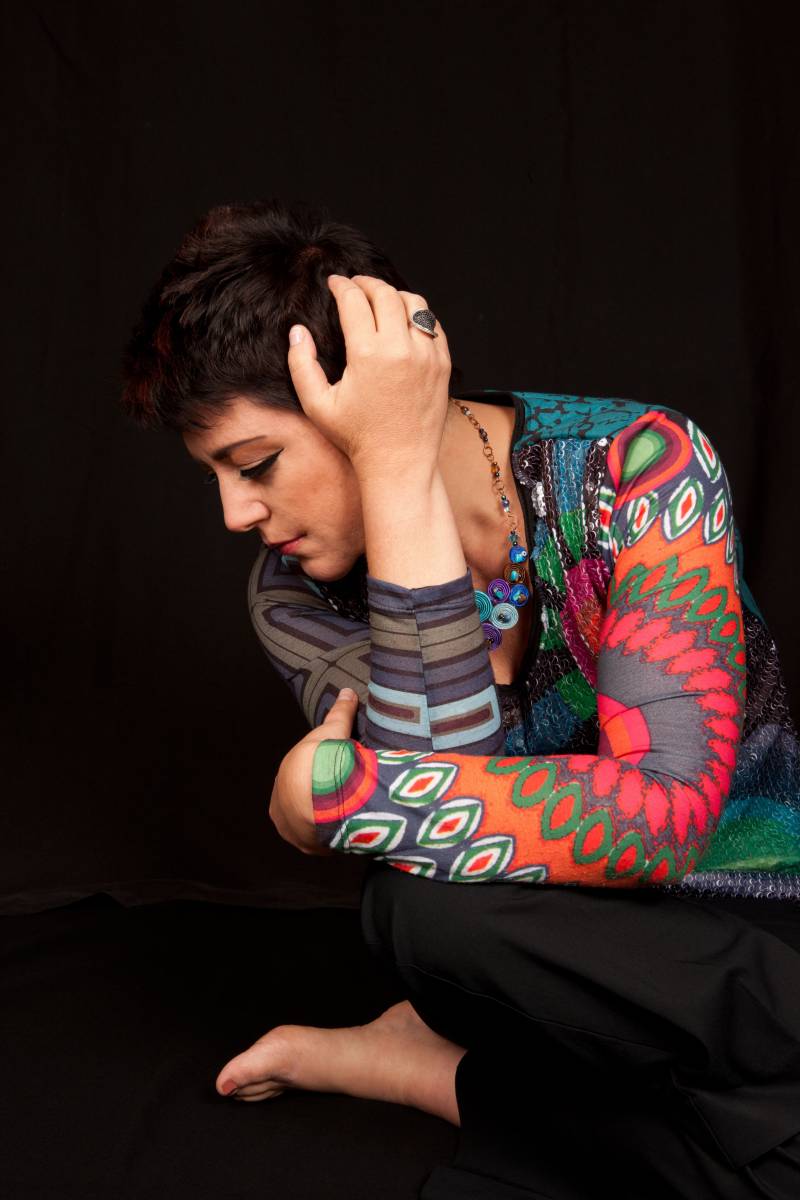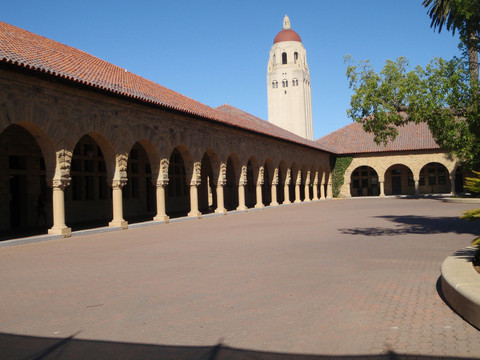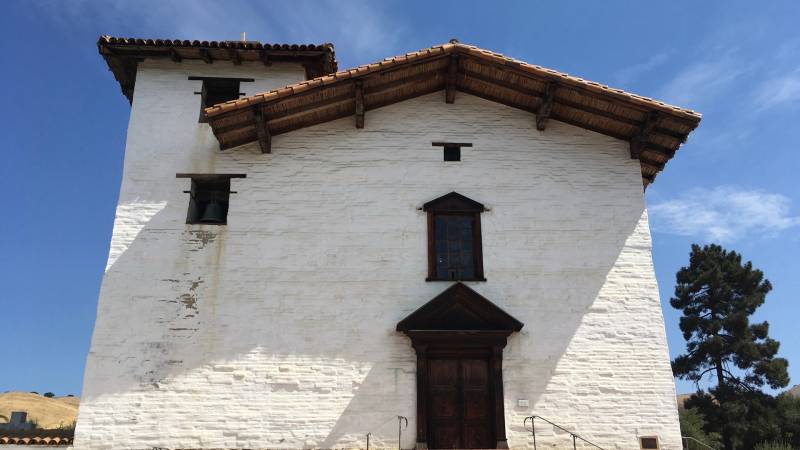Bells feature prominently in Gabriela Ortiz’ new concerto for flute and orchestra inspired by El Camino Real—the Spanish colonists’ name for the ancient byway dotted with missions that stretched from the Mexican border all the way to Sonoma.
But the composer says the tubular bells and crotales are not really intended to bring the church bells of the old missions to mind, at least not in the direct sense. Instead, the composer’s intention is to satirize Taco Bell, the Mexican-style fast food chain, invented by an American in California in the 1960s, which famously uses a mission bell as a logo.
“Think about the food in Taco Bell. Do you think that’s Mexican food? No. Nothing served in Taco Bell is really Mexican food. And it’s not American, either,” says Ortiz, who’s Mexican. “And this is the point. It’s not Spanish. It’s not Arabic. It’s not Mexican. It’s not Californian. It’s becoming something new.”

Ortiz’ 16-minute work is a highlight of Camino Chronicles, a weekend-long cultural event happening in San José Oct. 1-3 that aims to upend entrenched, romanticized narratives about El Camino Real.
“We want to unpack how El Camino is traditionally portrayed as a golden land of passion and romance and adventure,” says event co-organizer Marcela Davison Aviles. Davison Aviles, who is based in the Bay Area, is the co-founder of Camino Arts, a non-profit that focuses on cultural events around the historic route.
The Taco Bell sign is one among several popular architectural elements to have grown out of a hodgepodge of Mexican and Californian influences the composer satirizes in her new piece.
“This architecture that was developed in the 18th century, especially in California, is a mixture of many things: Spanish Andalusian architecture, Arabic ornaments and this kind of hacienda-cowboy-Mexican style,” says Ortiz, whose father was an architect and a founder of the famed Mexican folk music ensemble Los Folkloristas. “And the most interesting thing is that this architecture that was developed in California was adopted in Mexico later, as a type of nostalgia for what Hispanic heritage should be. So I was interested in this dialogue that goes and comes between the U.S. and Mexico, and how California sees Mexico. And how Mexico sees California.”
The concerto’s title—D’Colonial Californiano—references a style of architecture in Mexico popular among people who aspire to live a quasi-Californian lifestyle.

“The design ideas of Colonial Californiano stem from the mission period and from the ranches that basically colonized California,” says Luis Hoyos, an emeritus professor of architecture at California Polytechnic University Pomona who specializes in historic preservation and urban design. “Hallmarks would be the stucco walls, clay tile roofs and the use of motifs like arches and patios.”
The influence runs in both directions: Its counterpart in the U.S. is the Mission Revival style, which can be found all over the state. The Stanford University campus has many buildings in the Mission Revival style. Ortiz’ piece references California’s sentimental passion for this type of architecture in a section titled “Mission Revival Nostalgia” that features easy-going triplets in the solo flute, harp and vibraphone.
And in a section titled “Morisco Ornaments,” a curlicue solo flute line tinged with Arabic-sounding scales alludes to the intricate Moorish-style architectural embellishments that can be found on many buildings in both California and Mexico.
“Moorish design ideas, which came to Mexico and California via Spain, would be lots of metal in the use of screens, as well as embellished columns, arches and stone applique,” Hoyos says.
Throughout the work, the swallowed-and-spat-out architectural symbols find their match in Ortiz’ musical vocabulary. The influence of Igor Stravinsky’s European Neoclassicism rubs up against sounds that evoke Mariachi bands. The composer also tips her hat to American composer Charles Ives, who’s well known for mixing melodies and tonalities from very different musical traditions all at once.
Yet underpinning this careening musical satire of the copycat cultural back-and-forth between the U.S. and Mexico is a quiet resistance to what things have become in the aftermath of colonization. The way in which the work opens and closes with a mellifluous, bird-like flute passage recalls the silvery solo woodwind instrument’s Indigenous roots.
“The fact that the work is written for the flute is very important because flutes were omnipresent in pre-Columbian times,” says flautist and Camino Arts co-founder Marisa Canales. (Canales was scheduled to premiere the work with Symphony Silicon Valley this weekend, but was forced to cancel a few days ahead of the concert owing to an injury. The orchestra’s management told KQED that Denis Bouriakov, the Los Angeles Philharmonic’s principal flautist, will be stepping in.)
And Ortiz says there’s a double meaning in D’Colonial Californiano, the work’s title. The apostrophized “d” is as much a play on the word “decolonization” as it is a reference to a hackneyed, aspirational architectural style.
Architectural expert Luis Hoyos says it makes sense for the composer to use architecture as a lens through which to think about Mexico-California relations.
“Buildings do talk,” he says. “And what we put in them and how we use them is another language to examine.”

D’Colonial Californiano will receive its world premiere on Oct. 2 and 3 with Symphony Silicon Valley at the California Theatre in San José.




